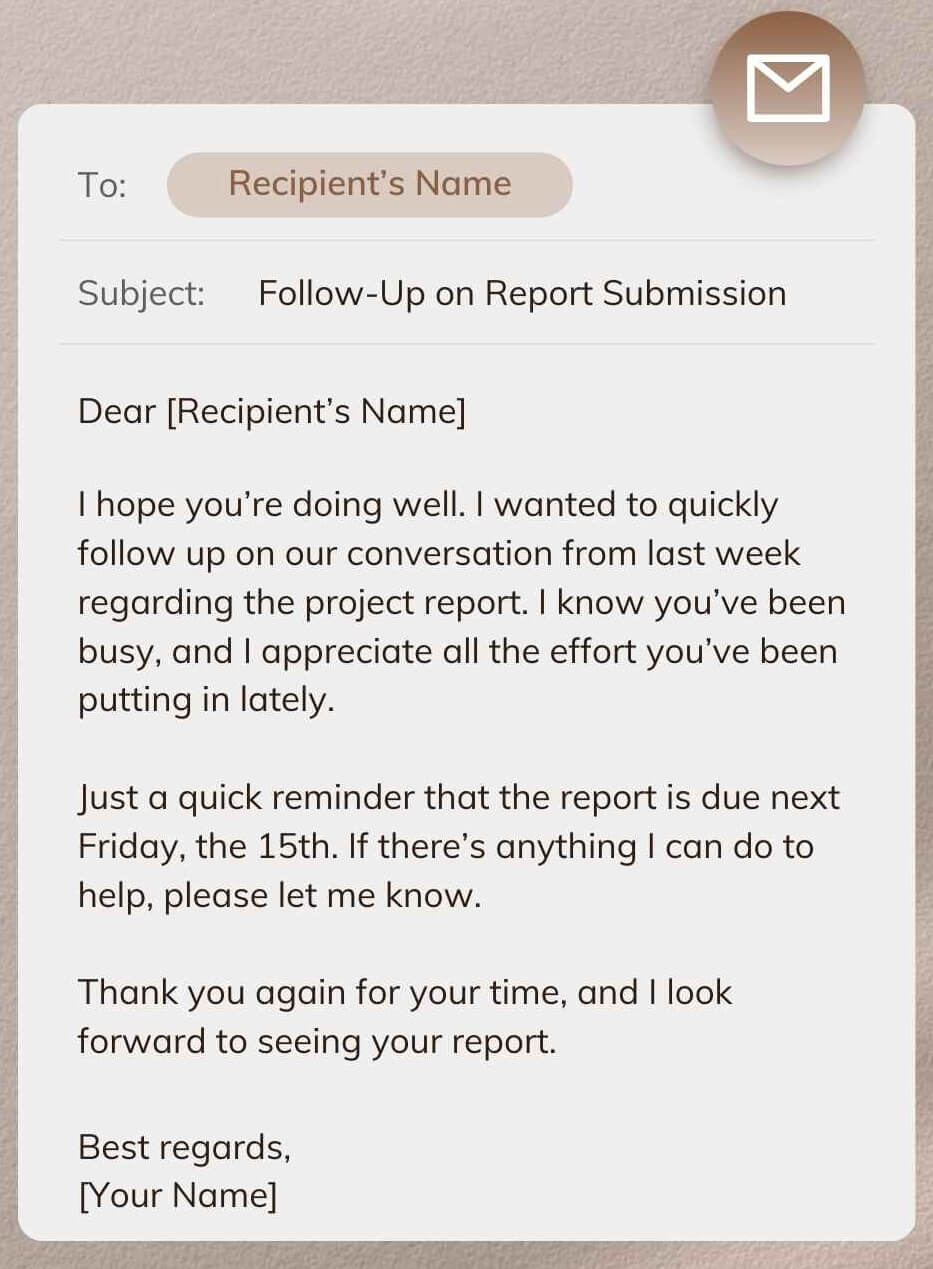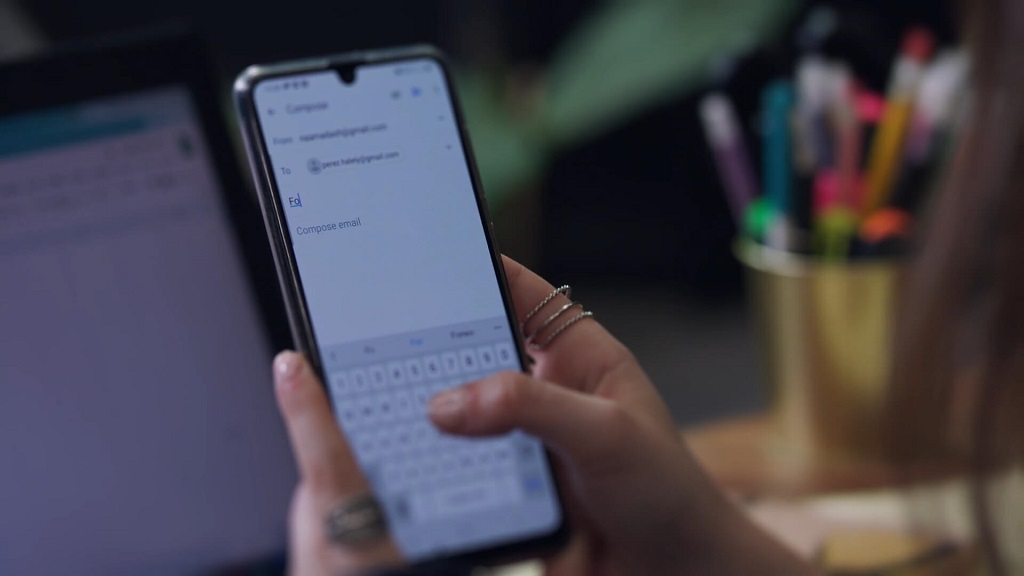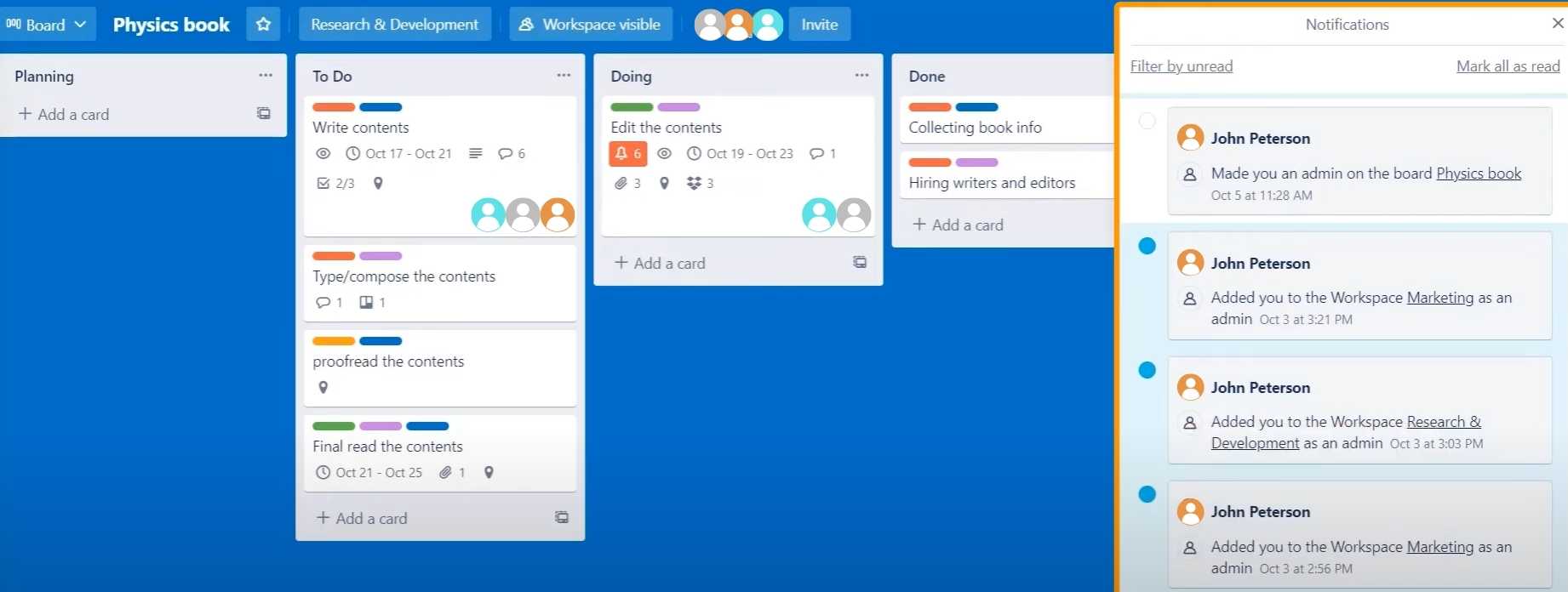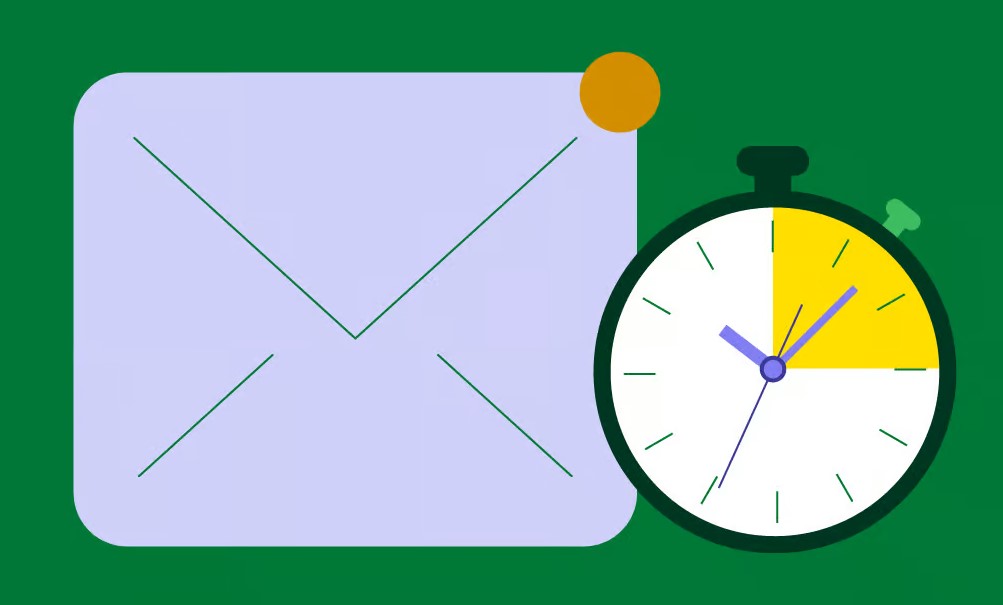Beyond just knowing when to send a reminder, the structure and tone of the email can make all the difference.
Sending reminders that are polite but firm ensures that the recipient feels respected, rather than pressured or insulted. The structure below serves as a guideline for how to write an effective reminder.
Also, learn more about why “Thanks in Advance” should be avoided.
Key Takeaways
- Only send email reminders when a commitment exists, it’s likely forgotten, and the task has important consequences.
- Avoid condescending language and excessive reminders; be polite, direct, and clear in your message.
- Alternatives like phone calls, in-person reminders, or task management tools may work better in some cases.
1. Clear Subject Line
The subject line should clearly indicate the content of the email without sounding demanding or overbearing. Avoid phrases like “Urgent!” or “Immediate Response Needed.” Instead, use phrases like:
- “Follow-Up Regarding [Task]”
- “A Quick Reminder About [Project]”
Clarity and brevity ensure the recipient knows what the email refers to without feeling overwhelmed before they even open it.
2. A Polite Greeting
Opening the email with a polite greeting sets a positive tone from the outset. A simple “Dear [Recipient’s Name]” is enough to establish this. Avoid using overly friendly or informal greetings like “Hey” unless you have a close relationship with the recipient.
3. Reference the Commitment
Begin by briefly mentioning the previous conversation, agreement, or request that the reminder is addressing. This reminds the recipient of the context without sounding accusatory. For example:
- “I wanted to quickly follow up on our discussion last week about the upcoming project report.”
- “Just following up on the recommendation letter we discussed earlier.”
This keeps the focus on the commitment, not on whether the recipient has forgotten.
4. Acknowledge Their Efforts

If possible, acknowledge any progress the recipient has already made or their busy schedule. It adds a tone of empathy and understanding to the message. For instance:
- “I know how busy things get this time of year, and I appreciate all the hard work you’ve been doing.”
- “I understand you have several projects on your plate, and I appreciate you taking the time to complete this.”
This softens the reminder, making it feel less like a demand and more like a respectful nudge.
5. State the Reminder Clearly
Once you’ve set the tone, state the reminder clearly and directly. Be concise but specific about what is needed. For example:
- “I just wanted to remind you that the report is due next Friday.”
- “I wanted to send a quick reminder about the recommendation letter deadline on the 15th.”
Avoid being vague. If the reminder is for a task with a deadline, make sure the recipient knows when that deadline is.
6. Offer Assistance (If Appropriate)

Sometimes, recipients may need help to meet a deadline or complete a task. Offering assistance can encourage them to respond positively to the reminder. For example:
- “If there’s anything I can do to help with the report, please let me know.”
- “Feel free to reach out if you need any additional information from me.”
This approach reinforces that you are not just issuing demands but are also willing to support them in completing the task.
7. A Friendly Closing
End the email on a positive note, thanking the recipient for their time or efforts. A simple “Thank you” or “I appreciate your help with this” goes a long way. Then, sign off with a professional closing, such as:
- “Best regards,”
- “Sincerely,”
- “Kind regards,”
Example of a Well-Written Reminder Email

Here’s an example of how a reminder email might look, incorporating the above elements:
Subject: Follow-Up on Report Submission
Dear [Recipient’s Name],
I hope you’re doing well. I wanted to quickly follow up on our conversation from last week regarding the project report. I know you’ve been busy, and I appreciate all the effort you’ve been putting in lately.
Just a quick reminder that the report is due next Friday, the 15th. If there’s anything I can do to help, please let me know.
Thank you again for your time, and I look forward to seeing your report.
Best regards,
[Your Name]
Common Mistakes to Avoid When Sending Reminders
Many people make mistakes when sending reminders that cause the recipient to feel pressured or even insulted. Avoiding these common pitfalls ensures that your reminder email will be effective without creating tension.
1. Overusing Reminders

Constantly reminding someone about the same task will likely lead to frustration. Even if the task is important, bombarding someone with multiple reminders shows a lack of trust in their ability to manage their own responsibilities.
Solution: Limit your reminders. After the first, consider other methods of communication if a follow-up is needed, such as a phone call or face-to-face conversation.
2. Sending Reminders for Non-Urgent Tasks
If the task does not have a clear deadline or immediate consequence, a reminder may be unnecessary. Sending reminders for tasks that do not require immediate attention could cause the recipient to feel that their time is not respected.
Solution: Evaluate the urgency of the task before sending a reminder. If there’s no immediate need, consider waiting or using a more casual approach to check in.
3. Using Condescending Language

Phrases like “gentle reminder” or “just a friendly nudge” can come across as passive-aggressive, even if well-intended. Such wording might make the recipient feel belittled.
Solution: Be direct without being condescending. Simply stating the reminder with a polite tone is more effective than trying to soften it with unnecessary phrases.
4. Marking the Reminder as High Priority
Marking an email as “High Priority” can escalate tensions, especially if the task is not as urgent as the sender implies. Recipients may feel that their work is being unnecessarily rushed.
Solution: Reserve the “High Priority” tag for truly urgent matters. For regular reminders, leave the priority setting at its default.
5. Reusing the Same Subject Line
Forwarding the same email with the same subject line pushes the conversation thread to the top of the inbox, but this can backfire. Recipients who organize their inbox chronologically may start from the bottom and ignore the most recent reminder.
Solution: Start a new email thread with a fresh subject line. This helps the recipient see the reminder without feeling like they’re being pestered about an old message.
Alternative Methods for Reminding People
Sometimes, email is not the best way to remind someone. In many cases, other communication methods can lead to a more effective outcome without the risk of seeming intrusive. Here are a few alternatives:
1. Phone Call
A phone call can be more personal and less formal than an email. It allows for a real-time conversation where both parties can clarify any misunderstandings and address the task at hand.
2. In-Person Reminder
If you are in the same location as the person you need to remind, an in-person conversation can feel more natural. This approach is often more effective because it allows for immediate feedback.
3. Calendar Invitations
For meetings or events, a calendar invitation can serve as a non-intrusive reminder. When accepted, the event will automatically show up in the recipient’s calendar, and they’ll receive a reminder as the date approaches.
4. Task Management Tools

In professional settings, tools like Asana, Trello, or Microsoft Teams can serve as effective ways to keep track of deadlines without needing constant reminders. These platforms allow team members to update task statuses and send automatic notifications as due dates approach.
When to Skip the Reminder Altogether

There are situations where it’s best not to send a reminder at all. Understanding when to hold off can save you from unnecessary frustration or damaging relationships.
When the Task Is Optional
If the recipient is not obligated to complete the task, a reminder may feel like unnecessary pressure. For example, reminding staff to attend an optional lunch seminar can seem excessive if there’s no requirement to participate.
When the Deadline Is Far Away
Sending reminders too early can have the opposite effect of what you intend. The recipient may feel that there’s plenty of time to complete the task and become less motivated to act. Wait until the deadline is closer before sending a reminder.
When It’s Already Been Acknowledged
If the recipient has already acknowledged the task, sending a reminder can feel redundant. Instead, trust that they’ll complete the task as promised, and only follow up if they miss the deadline.
Final Thoughts
Effective use of email reminders hinges on understanding the right time and approach. Reminders should only be sent when a commitment has been made, the task has likely been forgotten, and the consequences of not completing it are important.
By crafting reminders with care and using respectful language, you can avoid offending the recipient and increase the chances of a positive response.

